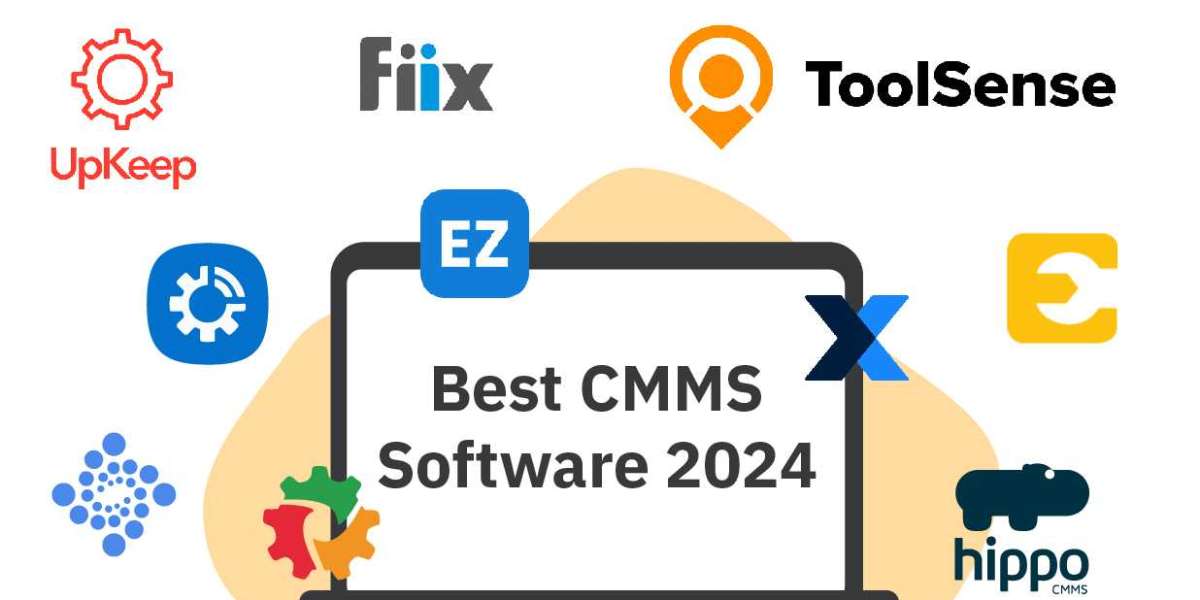In today's fast-paced and technology-driven world, businesses across industries rely heavily on machinery, equipment, and infrastructure to keep operations running smoothly. Whether you're managing a manufacturing plant, a facility, or an industrial operation, maintaining your equipment's performance and longevity is paramount. Preventive maintenance (PM) is one of the most effective strategies for ensuring equipment reliability, reducing downtime, and extending the lifespan of your assets.
One of the best ways to streamline and optimize preventive maintenance tasks is through the use of Computerized Maintenance Management Systems (CMMS) software. In this article, we will explore the importance of preventive maintenance, how it works, and how CMMS software can transform the way you manage maintenance tasks.
What Is Preventive Maintenance?
Preventive maintenance refers to the proactive approach of performing regular and scheduled maintenance tasks on equipment, machinery, or facilities before any failures or breakdowns occur. The goal is to reduce the risk of unexpected equipment failures, minimize costly repairs, and ensure that equipment is operating at peak efficiency.
Preventive maintenance involves a series of activities, including inspections, lubrication, cleaning, adjustments, and parts replacements. By keeping track of the condition of equipment and performing routine maintenance tasks, organizations can prevent the sudden and costly disruptions that come from unexpected breakdowns.
Key benefits of preventive maintenance include:
- Reduced downtime: Scheduled maintenance helps identify and address issues before they cause significant disruptions.
- Cost savings: Preventive maintenance can extend the life of assets and reduce the need for costly repairs or emergency maintenance.
- Improved safety: Regular maintenance ensures that equipment operates safely, reducing the risk of accidents or safety hazards.
- Increased efficiency: Well-maintained equipment runs more efficiently, leading to improved performance and lower energy consumption.
The Role of Preventive Maintenance in Business Operations
For most organizations, equipment downtime can be one of the most expensive and disruptive challenges they face. A piece of equipment that goes down unexpectedly can cause delays in production, disrupt workflows, and lead to costly repairs. Preventive maintenance helps mitigate these risks by identifying potential issues early and addressing them before they become critical failures.
Preventive maintenance is crucial in industries where machinery and equipment are in constant use, such as:
- Manufacturing: Machines and production lines need to operate at peak performance to meet production targets. Unscheduled breakdowns can lead to significant losses in productivity and revenue.
- Healthcare: In healthcare facilities, equipment failures can have serious implications on patient care. Preventive maintenance of medical devices is essential for ensuring that equipment is functioning safely and reliably.
- Facilities Management: HVAC systems, elevators, and other building systems require regular maintenance to keep the environment comfortable and safe for occupants.
- Transportation: Vehicles, fleets, and machinery in transportation networks must be kept in optimal condition to avoid delays and potential accidents.
By implementing preventive maintenance, businesses can improve the reliability of their operations, enhance asset performance, and minimize costly downtime.
How Preventive Maintenance Works
Preventive maintenance programs can be either time-based or usage-based. In time-based PM, maintenance tasks are performed at fixed intervals, regardless of the equipment's usage. For example, a machine might need lubrication every 30 days or an HVAC system may need a filter replacement every three months.
Usage-based PM, on the other hand, schedules maintenance based on the actual usage of the equipment. For instance, a machine might require maintenance after running for a certain number of hours or after completing a specific production cycle. Usage-based maintenance ensures that equipment is serviced when it needs attention, based on performance rather than arbitrary time intervals.
An effective preventive maintenance program involves:
- Asset management: Keeping track of all equipment and machinery, including their maintenance history, specifications, and manufacturer recommendations.
- Task scheduling: Setting up a schedule for regular inspections, repairs, and preventive actions based on time or usage intervals.
- Monitoring and reporting: Regularly checking the performance and condition of equipment and recording any issues or potential problems.
- Maintenance execution: Performing maintenance tasks like lubrication, cleaning, or part replacement as needed.
For businesses managing multiple assets and large operations, organizing and tracking preventive maintenance tasks can quickly become overwhelming. This is where CMMS software comes into play.
What Is CMMS Software?
A Computerized Maintenance Management System (CMMS) is a software solution designed to streamline and automate the maintenance process. It helps organizations track, manage, and optimize their preventive maintenance tasks, reducing the complexity of maintenance management.
CMMS software provides a centralized platform for maintenance teams to manage their workflows, track asset performance, and plan for preventive tasks. It ensures that maintenance activities are scheduled on time, and resources are allocated efficiently, minimizing the risk of breakdowns and maximizing asset performance.
Key features of CMMS software typically include:
- Asset management: CMMS tracks detailed information about each asset, such as age, maintenance history, and condition. It provides a comprehensive view of all assets within the organization.
- Work order management: CMMS allows you to create, assign, and track work orders for preventive maintenance tasks. It helps prioritize tasks and ensures timely completion.
- Scheduling and reminders: CMMS automatically schedules preventive maintenance tasks based on time or usage intervals and sends reminders to maintenance teams.
- Inventory management: CMMS helps manage spare parts inventory, ensuring that necessary parts are available when needed for maintenance.
- Reporting and analytics: CMMS generates reports on equipment performance, maintenance costs, and work order completion rates. This data helps managers make informed decisions on resource allocation and process improvements.
By centralizing and automating these processes, CMMS software helps maintenance teams stay organized, reduce human error, and ensure that preventive maintenance tasks are performed consistently and efficiently.
How CMMS Software Enhances Preventive Maintenance
Implementing CMMS software in your preventive maintenance program offers numerous advantages:
1. Streamlined Scheduling
CMMS software simplifies the process of scheduling preventive maintenance tasks. With time-based and usage-based scheduling features, you can ensure that all assets are inspected and maintained on time, without relying on manual tracking. Automated reminders and alerts help prevent tasks from being overlooked.
2. Improved Work Order Management
CMMS helps automate the creation and assignment of work orders. When a maintenance task is due, the system generates a work order and assigns it to the appropriate team member. This reduces the administrative burden of manually managing work orders and helps ensure that tasks are completed on schedule.
3. Increased Equipment Uptime
By ensuring that preventive maintenance is consistently performed, CMMS software helps increase equipment uptime. Regular inspections and early detection of potential issues allow for timely repairs before they lead to more significant failures. This minimizes downtime and keeps operations running smoothly.
4. Better Data Insights
With CMMS, maintenance teams have access to real-time data and historical performance metrics of assets. This data can be used to track the effectiveness of preventive maintenance tasks, analyze equipment reliability, and make data-driven decisions on resource allocation.
5. Reduced Maintenance Costs
By shifting from reactive maintenance to preventive maintenance, CMMS software helps organizations reduce the costs associated with emergency repairs and unplanned downtime. It also helps extend the lifespan of assets, lowering replacement costs and reducing the overall cost of ownership.
Conclusion
Preventive maintenance is an essential strategy for improving asset performance, reducing downtime, and lowering maintenance costs. By taking a proactive approach to equipment maintenance, organizations can ensure that their assets remain in optimal condition and continue to deliver value over time.
CMMS software plays a crucial role in making preventive maintenance programs more efficient and effective. By automating scheduling, work order management, and asset tracking, CMMS software helps organizations stay ahead of equipment failures and maximize the reliability of their assets.
Investing in CMMS software not only simplifies the maintenance process but also provides data-driven insights that can improve decision-making and overall operational efficiency. For organizations looking to optimize their preventive maintenance practices, adopting a CMMS solution is a smart and impactful step forward.
 Meet Ups
Meet Ups
 Experiences
Experiences
 Learning Center
Learning Center
 Accommodation
Accommodation
 Roomie
Roomie
 Ride
Ride
 Spread the Word
Spread the Word
 Student Bazaar
Student Bazaar
 Jobs
Jobs
 Blogs
Blogs
 About StudentInsta
About StudentInsta


